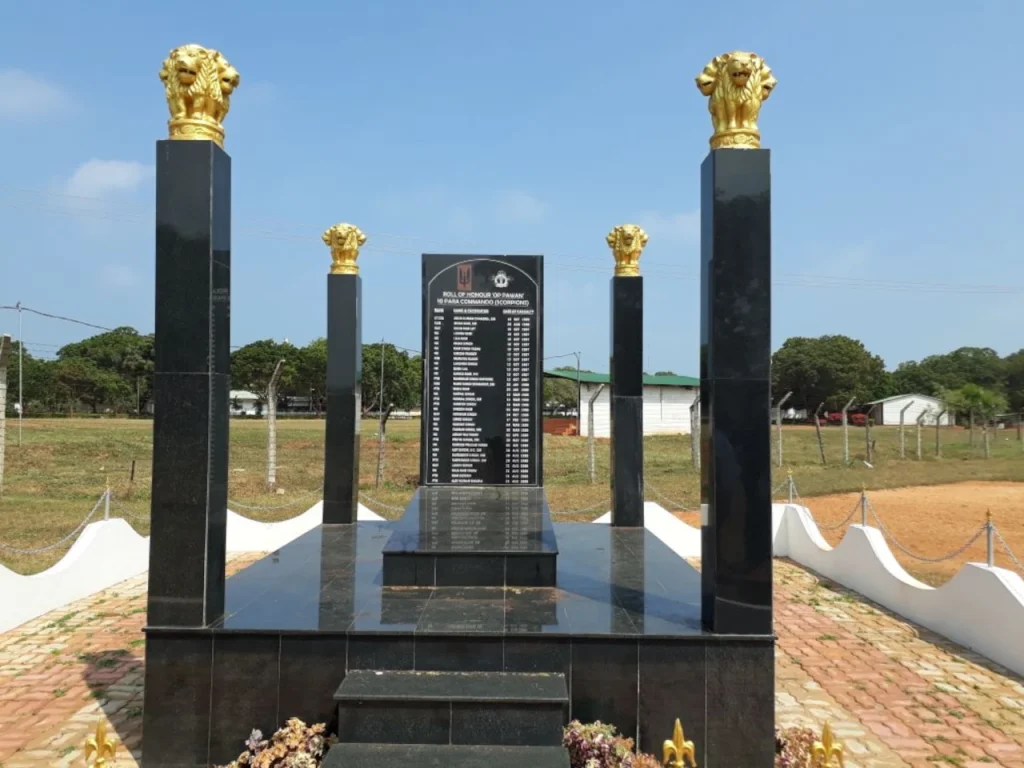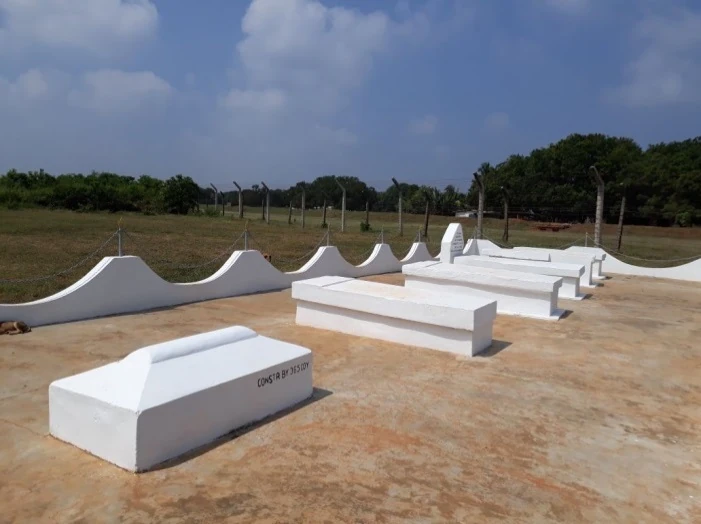The island of erstwhile Ceylon, because of its diverse flora, fauna, rainforest landscapes, scenic highlands and sandy beaches, and above all the overtly friendly people, used to be called the ‘island of serendipity.’ It was where Europeans flocked for rest, recuperation and suntan, and to find their ‘karma’ since time immemorial. Then came independence from the British in 1948 with an ethnic ratio of 75% Sinhalese, 20.5% Tamils, and the rest minority groups. In 1972, the politically shrewd Bandaranayke changed Ceylon to Sri Lanka (SL) and made a new constitution for ‘The Democratic Socialist Republic of the Sinhalese’, which turned 25% of the nation into hopeless, stateless, refugees with no citizenship. This was to eventually lead to three and half decades of the bloodiest civil war fought anywhere on the earth, displacing over one and a half million people, killing more than two hundred thousand, and maiming more than a million Tamils as well as Sinhalese, ruining the tiny island’s economy to penury and creating indelible racial hatred within is diaspora.
Decades of turmoil had not eased the troubles of the island. It also involved the Tamils of South India, whose destinies were intertwined with the Tamils of Northern Sri Lanka. This was the backdrop in a nutshell into which the Indian Armed Forces were pitchforked in mid 1987.

It is a well known fact that the Armed Forces had approximately 1200 Killed in Action(KIA) and 3000 maimed during the three year long Op Pawan, from July 1987 to January 1990. This was our second operation outside our country since independence, the first being the 1971 war. Our policies on bringing our dead back home had not been streamlined. We had not formulated our plans to cater for this vital aspect, probably because the level of engagement had not been assessed correctly. Our leadership had not questioned this, due to which all our dead were cremated or buried there during Op Pawan. One thousand two hundred officers and men were either cremated or buried there on foreign soil.

The Indian soldier is remarkable. He just follows orders. Not one man was worried about what would happen to him if he was killed in action during Op Pawan. They continued relentlessly on their mission for almost three years. It was always a high and intense level of operations and engagement in jungle terrain, resulting in more casualties than anticipated. All our wars have been of short durations – 14 to 20 days.
This involved lots of planning and training before the actual declaration of war, followed by short, intense wars. But Op Pawan was like a continuous Kargil war over three years. Stress levels and degree of difficulty were very high. Units operating under extremely high levels of operational involvement, with little respite. We were fighting an unconventional enemy in thick jungle terrain, which they knew well, and operated with AK 47 weapons which could bring heavy bursts of fire, whereas we still had our 7.62 SLRs. It was under these trying conditions that the bulk of our troops operated.

In our initial engagements, our casualties were heavy because units got little or no time to reorient their training before induction. Later as units being inducted got more time, they were able to practice their sub unit drills to perfection. This significantly brought the casualty rate down and improved confidence levels.
Three decades after they had left the island, on 10 February 18 and now in their 70s, a group of IPKF veterans, which included me, once again went to Sri Lanka, not to imbibe suntan, karma as tourists, but as aged veterans, to uphold our dharma and bounden duty, to take a walk through the old killing fields in Northern Sri Lanka, to pay respect to those whom we had left behind. We had planned to visit our operational areas in 2018, and we were able to revisit all the areas where we had operated. Jaffna Fort, Jaffna Town, Elephant Pass, Mullaitivu, Mannar and Vavuniya were visited.
We first visited Jaffna Fort, which was in ruins and closed to the public. The old HQ of the 41 Infantry Brigade was now in ruins. Later the group visited the Jaffna University stadium, where the biggest tragedy of Indian special heliborne clandestine operations in the war had taken place.
On the night of 11/12 October 1987, 120 troops of 10 Para Commando and 360 from 13 Sikh LI (Delta Company), who were still flying into Palali from Gwalior, were tasked to storm Jaffna University, then a stronghold of LTTE, where all the leaders of LTTE including Prabhakaran and his deputy Mahattaya were expected to be present for a meeting. The purpose of the operation was to snatch the top leadership and incapacitate LTTE. Like all perfect war plans, nothing went right in this one, too, because the LTTE had received prior warning of the attack and were well prepared, creating a complete blackout of the area surrounding the university, machine gun nests on top of all surrounding buildings and well sited reception parties around the stadium.
The Jaffna University operation was launched at 0100 hrs on 12 October 1987, with half-moon condition but low clouds that drifted in obscuring the moon. For one reason or the other, that is now academic, and instead of 120 Commandos from 10 Para and 360 troopers from 13 Sikh Li (total 480), the helicopter lift managed to insert only a total of about 148-150 men. Many of them were butchered by LTTE. There was a huge extrication exercise using tanks and BMPs, which followed the un-mined railway line. Some from 10 Para, adept at such clandestine warfare, went to the ground and managed to survive. Only one of the 60 odd Sikh LI lived to tell his tale. The mission was a disaster. All the soldiers were cremated there. The University grounds had a strange aura as we walked around, and we felt strange that the spirits of our men still hovered there, awaiting a final resting place.
The group visited all the areas where they had operated in Mullativu, Mannar and Vavuniya. Surprisingly the entire countryside had been transformed, and old indications of the armed struggle had been eradicated. No tombstones, no memorials or indications of a brutal war that had been waged on these lands.
We were also able to pay tribute at the IPKF Memorial in Colombo and the 10 PARA memorial in Palaly. We discovered a few unmarked graves at Palaly and Vavuniya. We are certain there would be many more where Christian and Muslim soldiers lay buried. At Palaly, the unmarked grave of a paratrooper Officer was shown to the group, who, while coming down in his parachute, was shot before he was able to land. Local folklore had it that this was sometime in July 1987. The locals maintain the grave. They could not inform the group about who had constructed the grave. The blank tombstones told a story of forgotten men who had bravely sacrificed their lives and done their duty. We thank the Sri Lankan citizens who maintain them and have not eradicated these graves.
There surely is a need for the ‘Graves Commission’ to be appointed, who should pinpoint and mark each grave and recommend their mortal remains be shifted to an IPKF memorial in India. A Day of Commemoration of Op Pawan must be instituted to honour the brave deeds of the IPKF and those who had made the supreme sacrifice on that emerald isle. It’s never too late. We owe it to the Indian soldier. They have not died in vain.


Very well articulated, authentic & first hand account of Op Pawan Veterans visit to battle fields 1987-90 of IPKF
In consultation with the Govt of Sri Lanka, we should mutually plan to honour sacrifices of soldiers (it could be annual visits to Colombo/ Chennai.. drawing parallel to similar arrangements with Govt of Bangladesh at Dhaka/ Kolkata – 1971 Bangladesh Liberation War)
An excellent article on IPKF operations in Sri Lanka – the Indian soldier goes anywhere he is ordered and is always ready for the ultimate sacrifice for the Nation – it is now incumbent on the Nation to acknowledge his role as part of the IPKF as Sri Lanka has done to honour their sacrifice – this will assuage the feelings of the families of those killed in action in a foreign country, especially so because they were all cremated there without their near and dear ones getting a last glimpse of them.
Well articulated by Gen Jose .The commemoration of the IPKF killed in action is an idea whose time has come .A grateful nation must honour these brave warriors who died in a foreign land .
We must get the fallen soldier’s back to soil where they were born f & for which they made the supreme sacrifice. The incorrectvpolitical decision of that era needs to corrected, if the current political dispensation can’t do then it will never happen.
The Nation owe this little respect to the forgotten heroes.
2022-08-22 At 5:21 am
We must get the fallen soldier’s back to soil where they were born f & for which they made the supreme sacrifice. The incorrect political decision of that era needs to corrected, if the current political
We must honour our fallen by recovering their remains. We are fortunate that the Sri Lankan Army continues to maintain the Graves and memorials due respect and honour.
Very well brought out sir
Worked under youand well understood the mind set of the others,i buulriedfeelings like the brave hearts who were left by the rule makers un recognised.
Nothing late to bring back the remains if possible back home .
The families will be ever remain grateful for giving the opportunity to give respect to the brave hearts .
Thanks for your write up.
Sure the IA and government will give due consideration to this.
Jai Hind